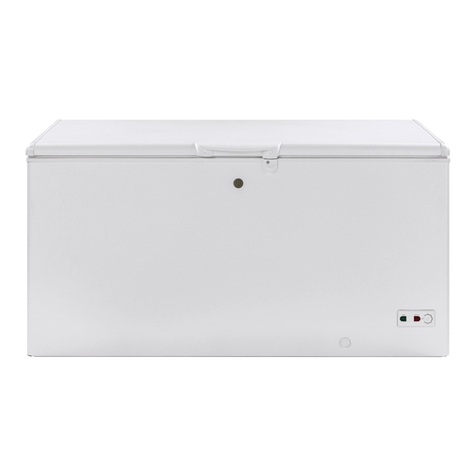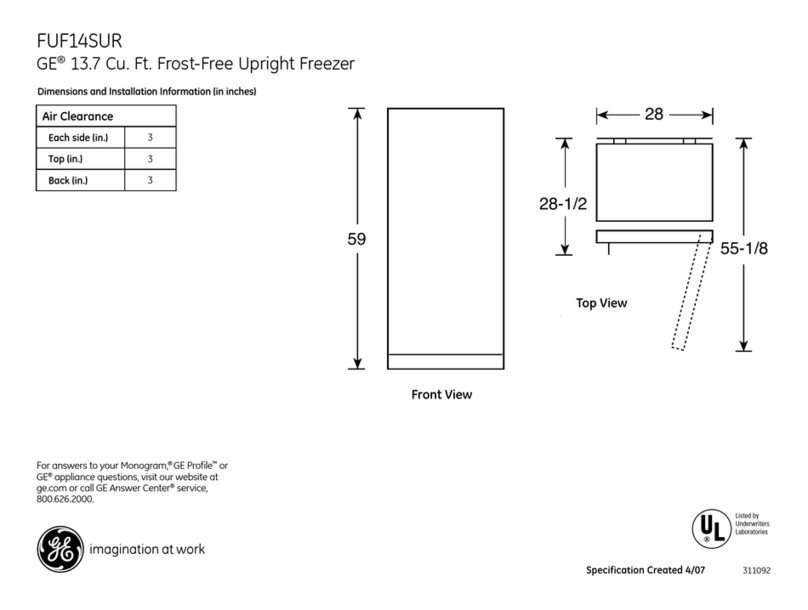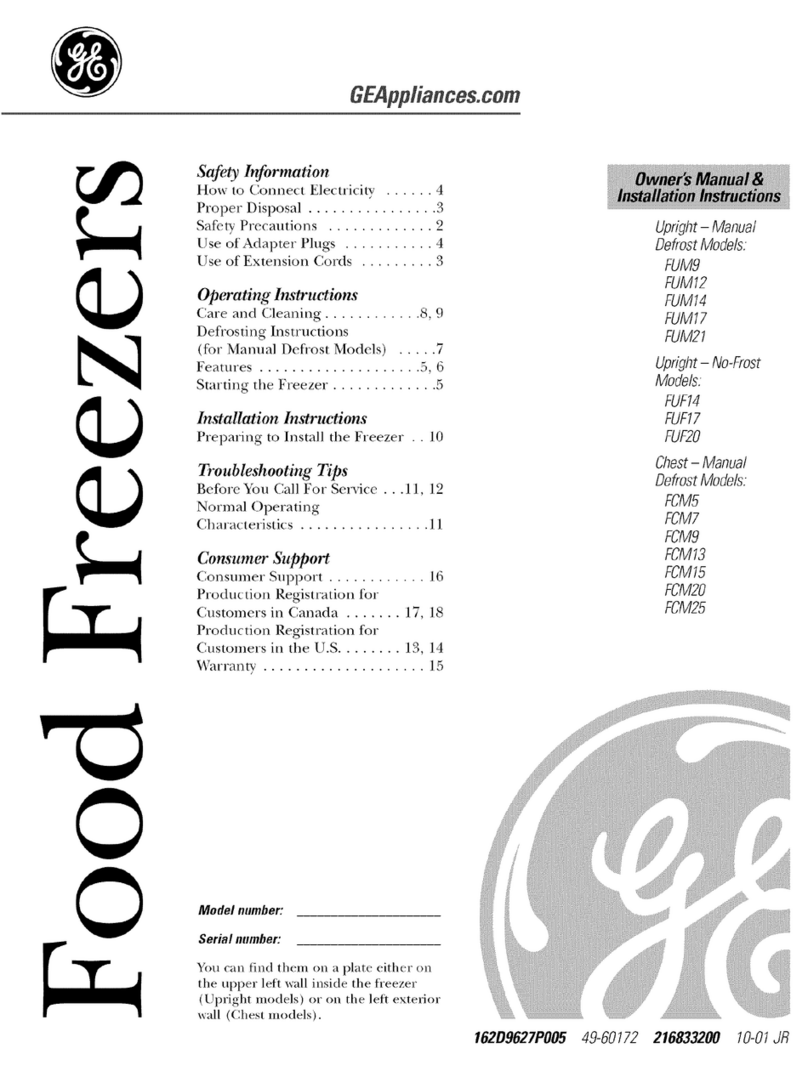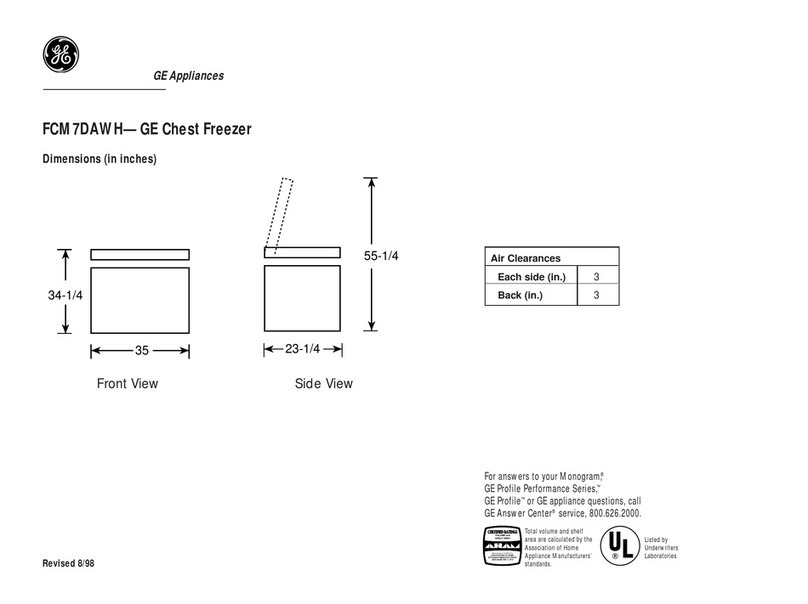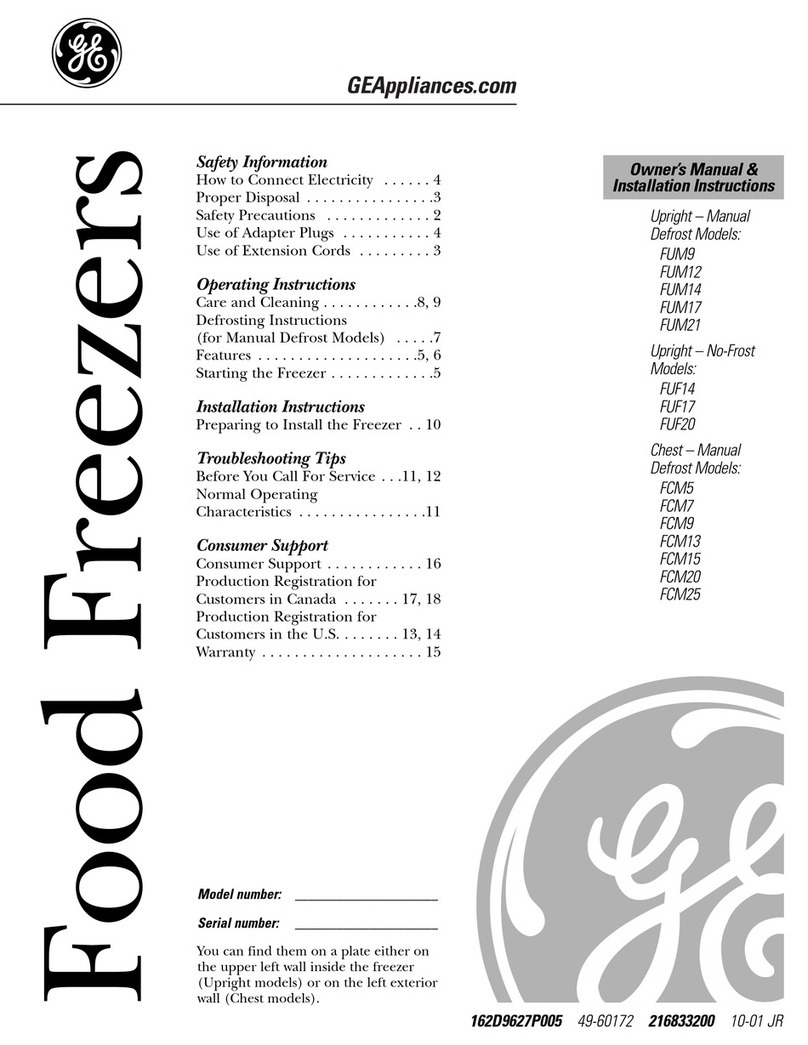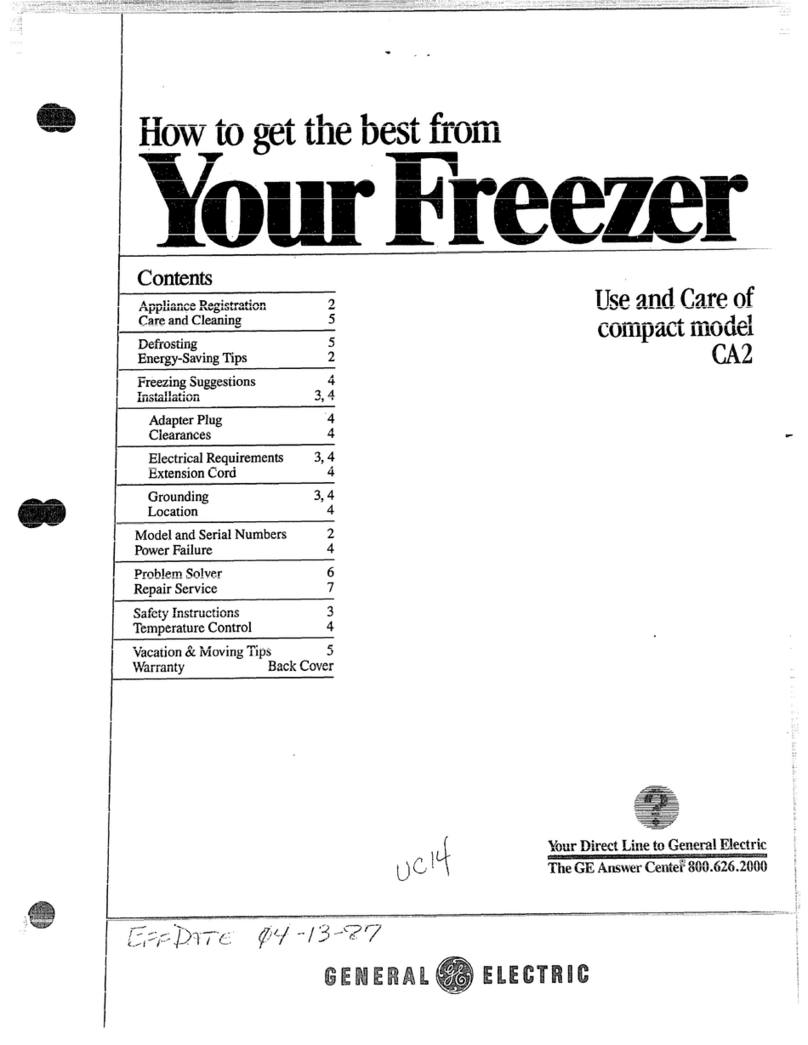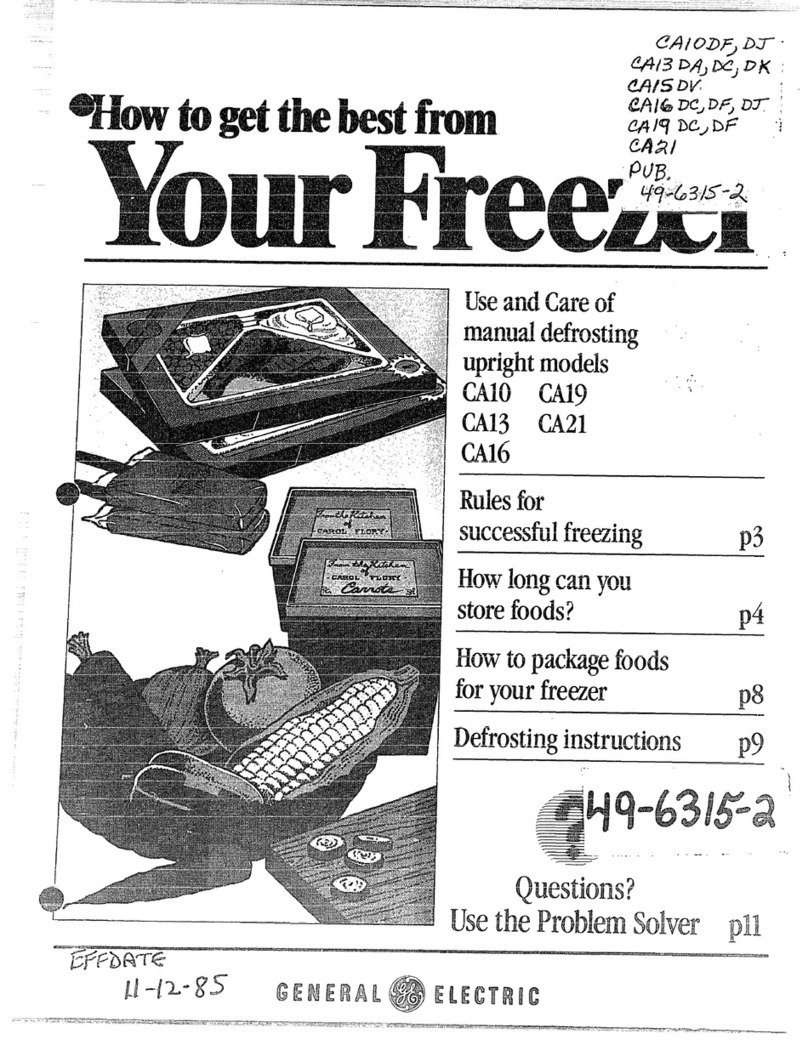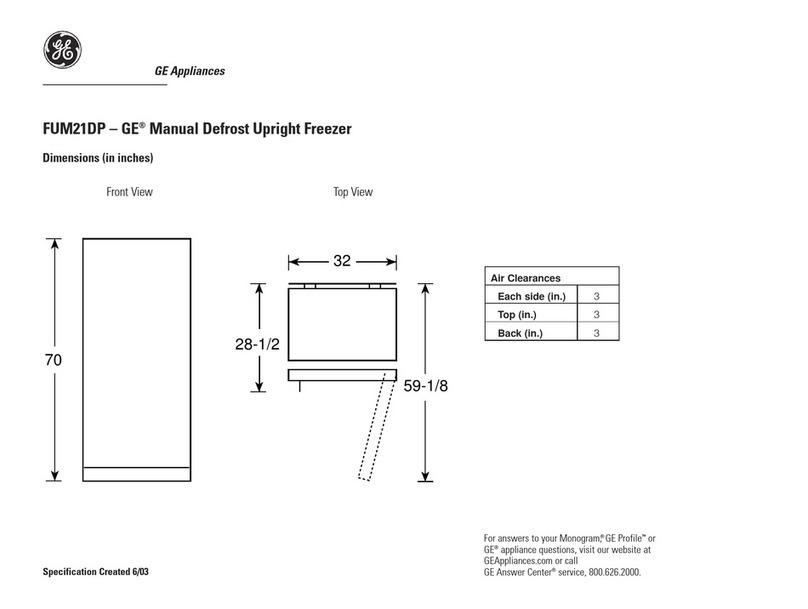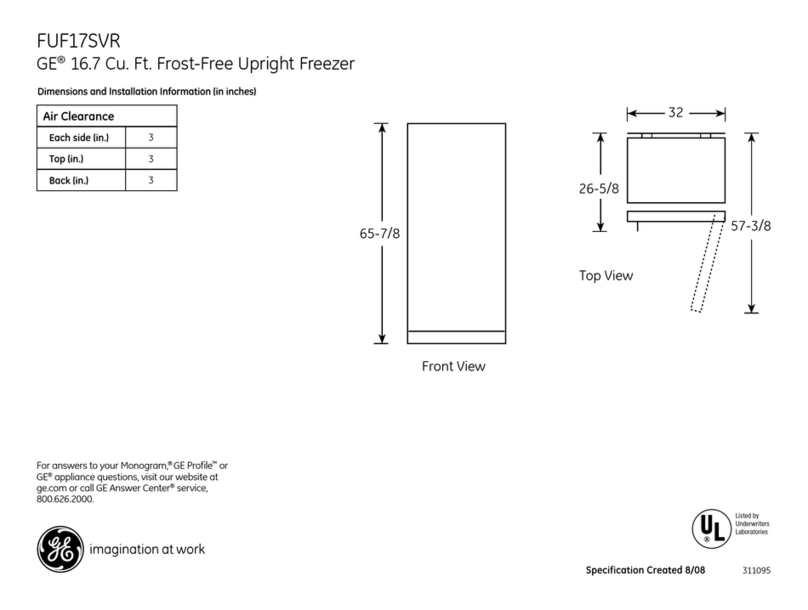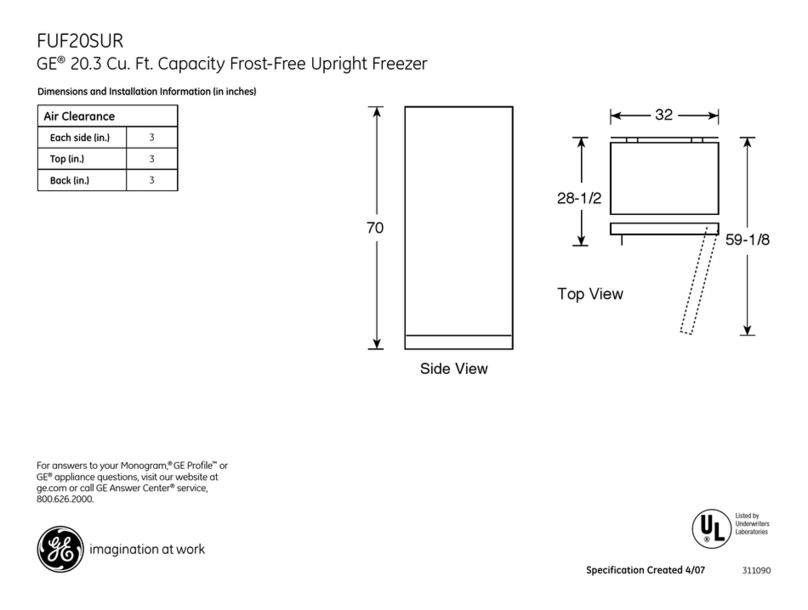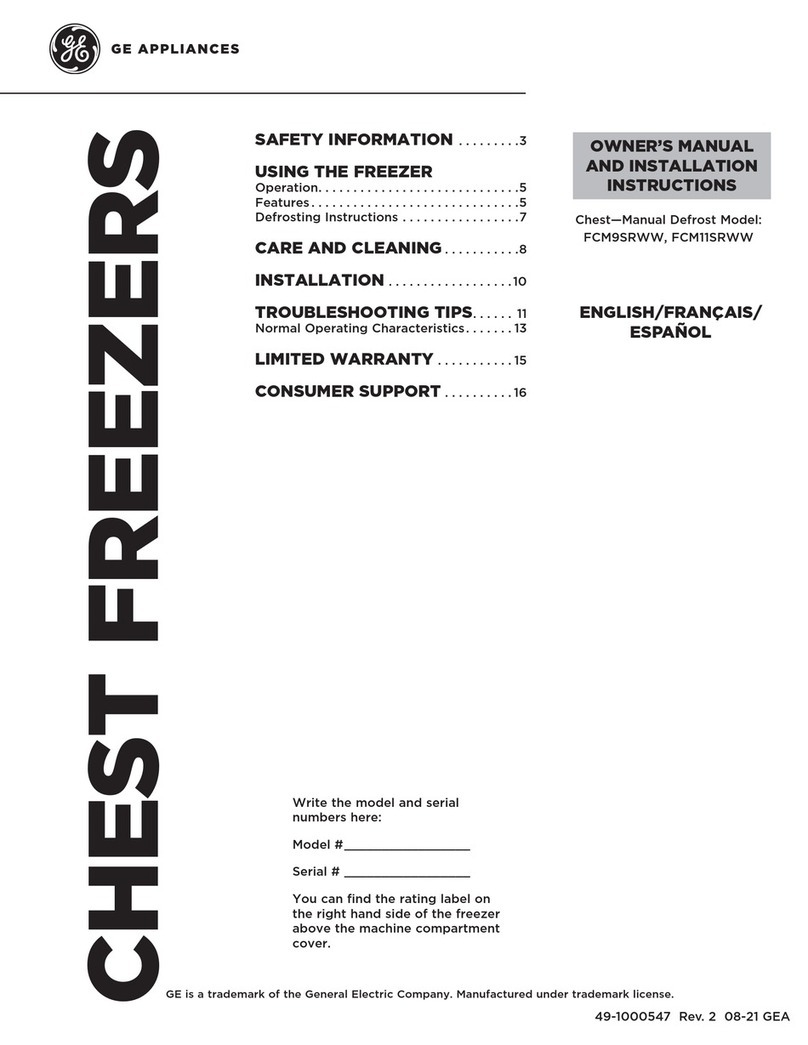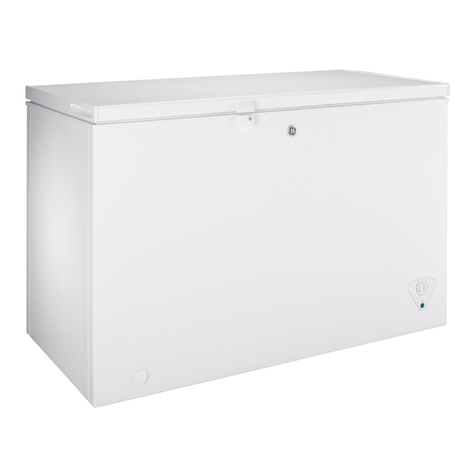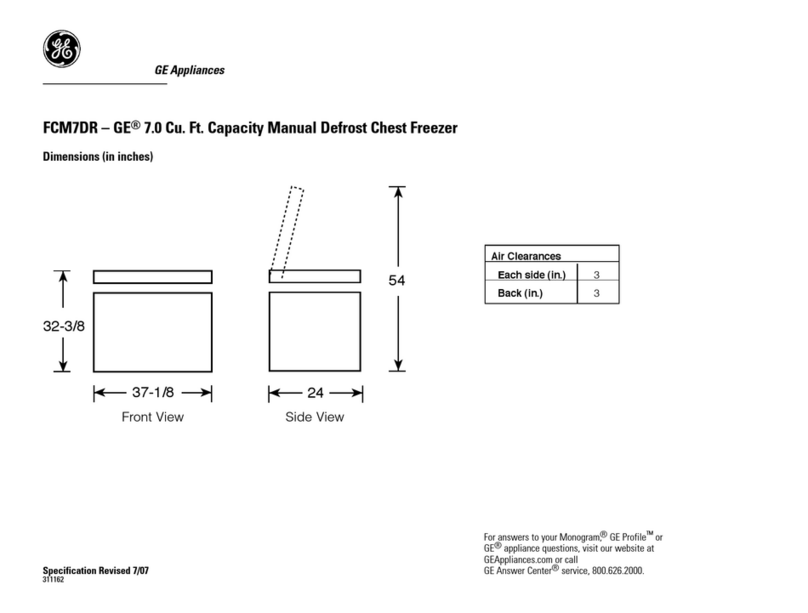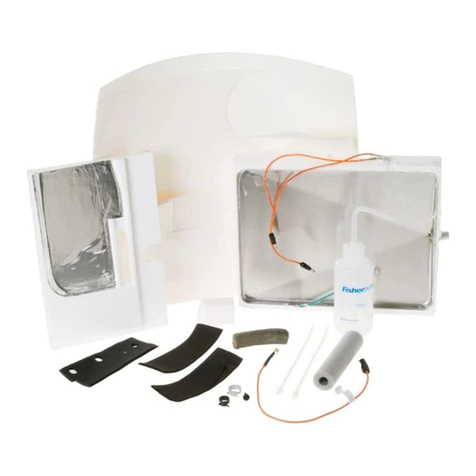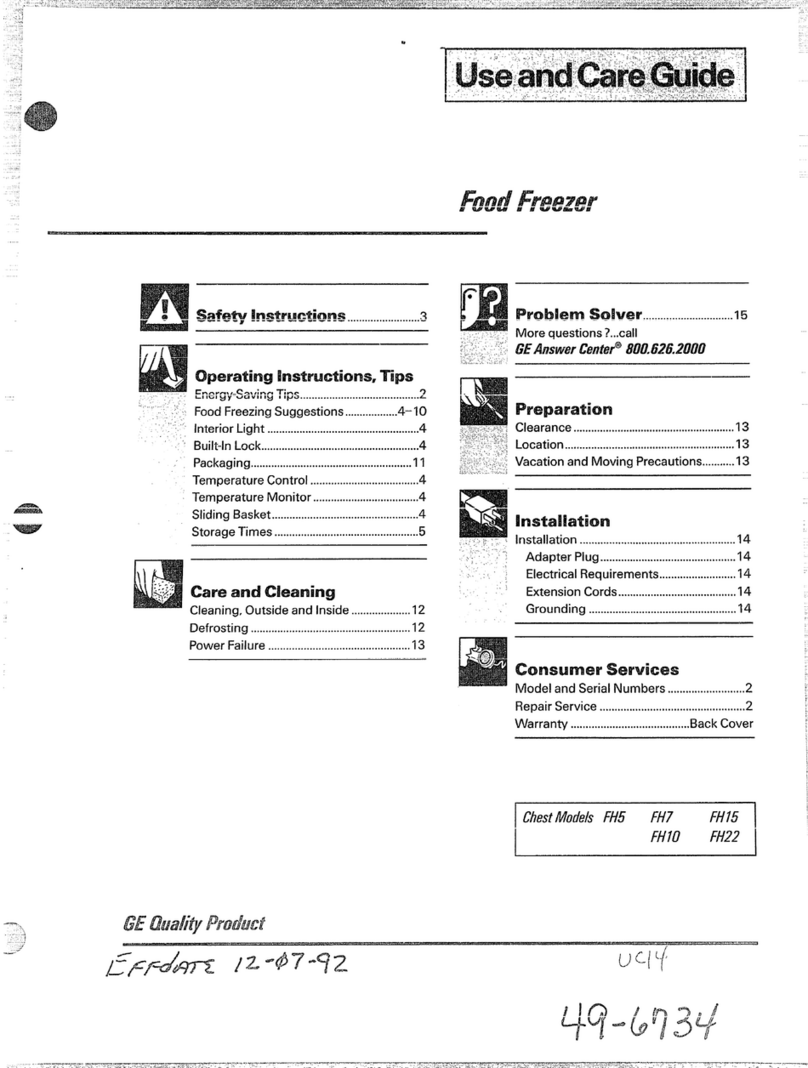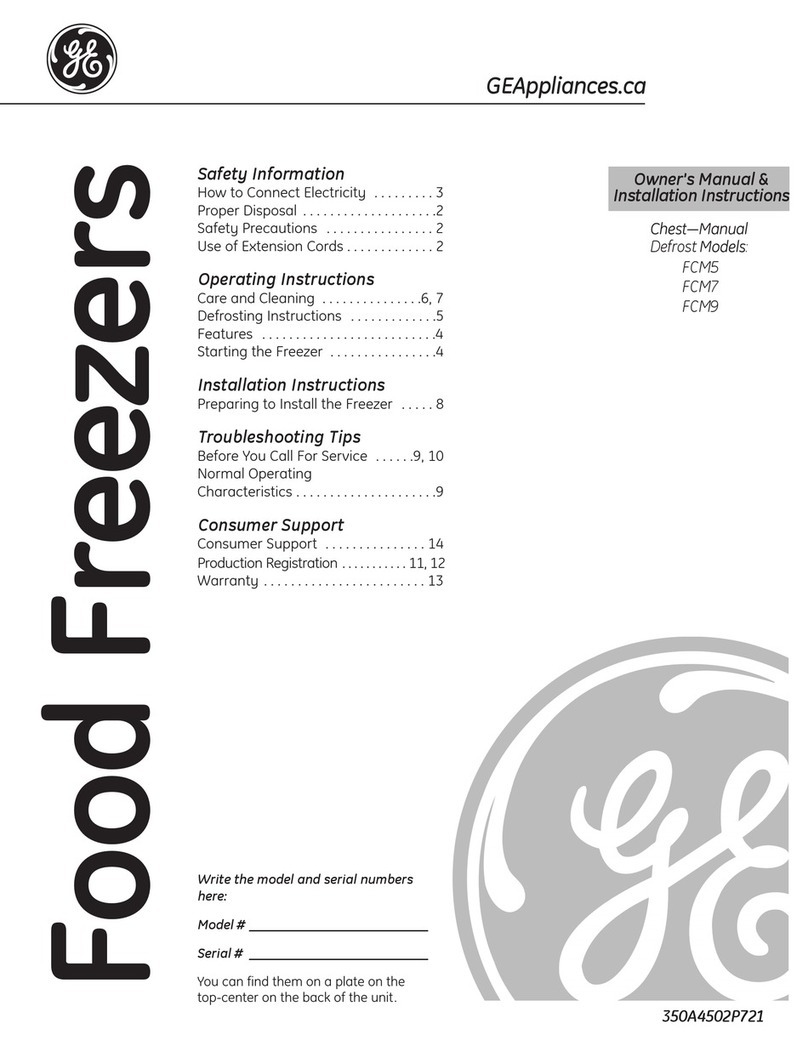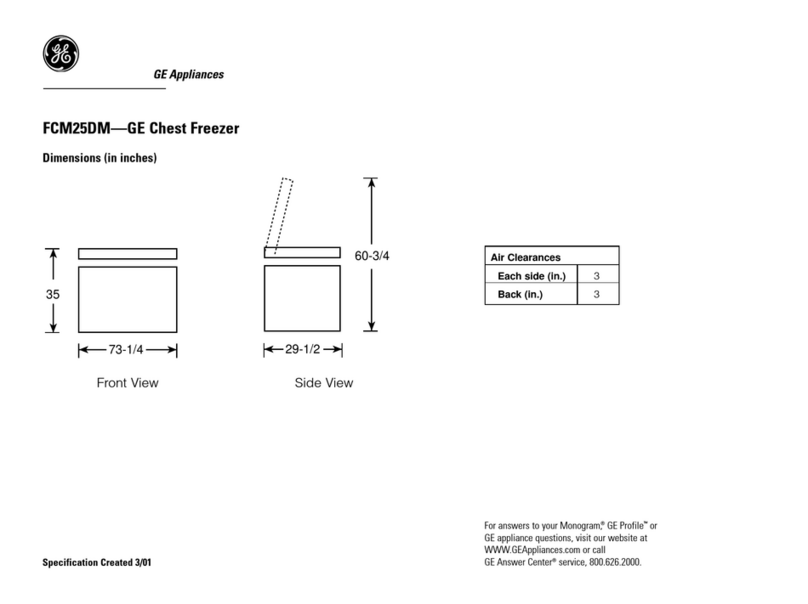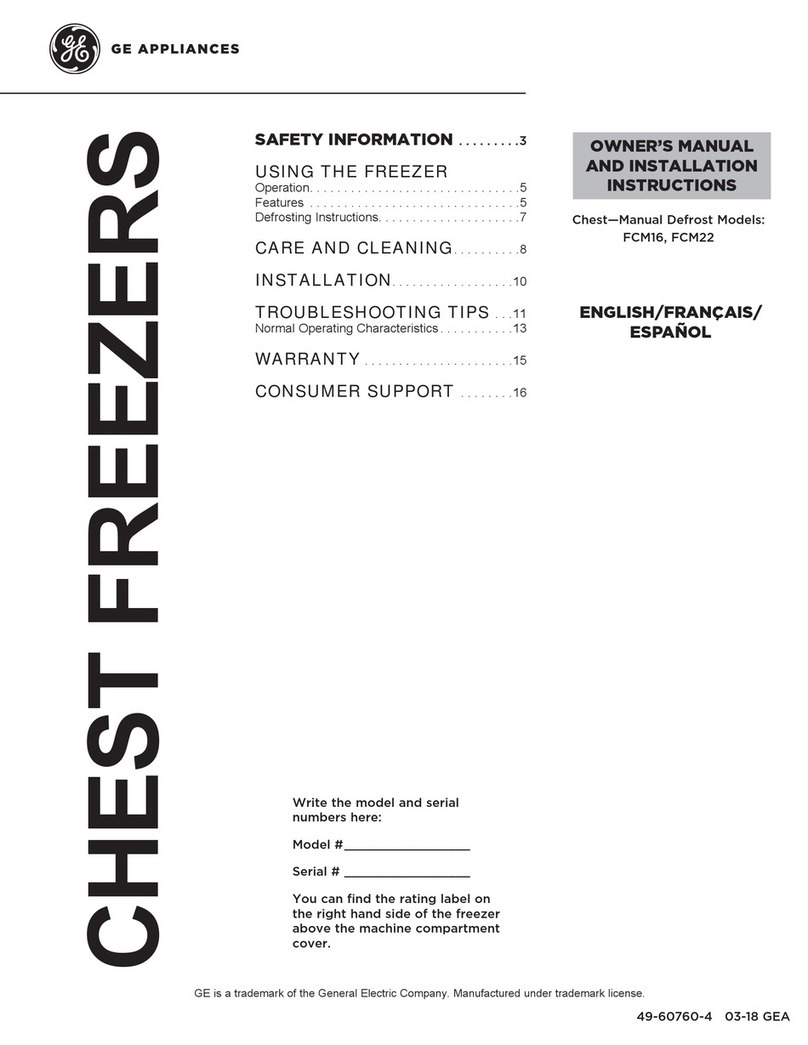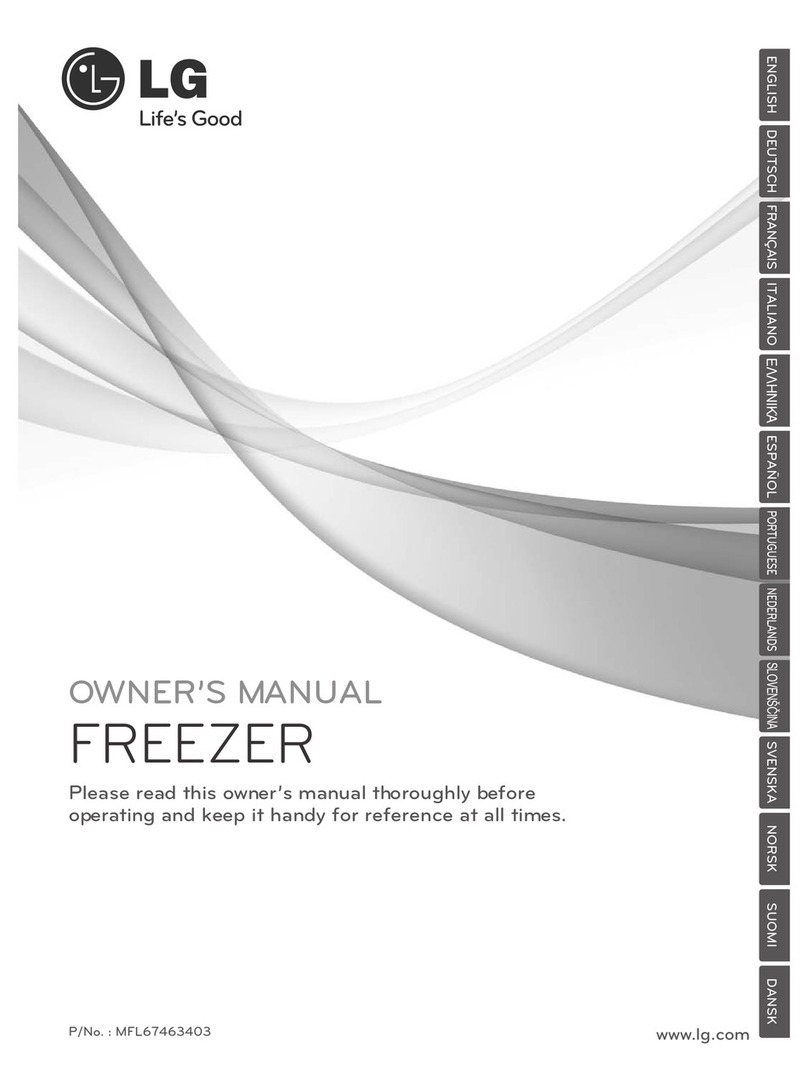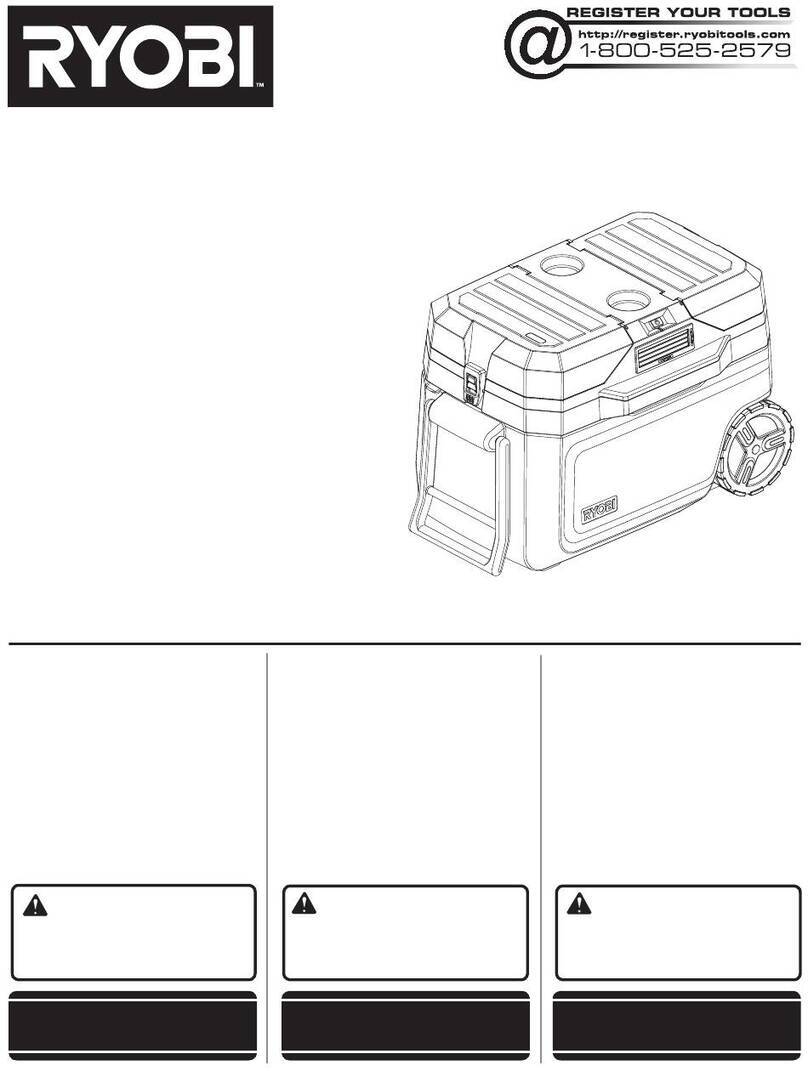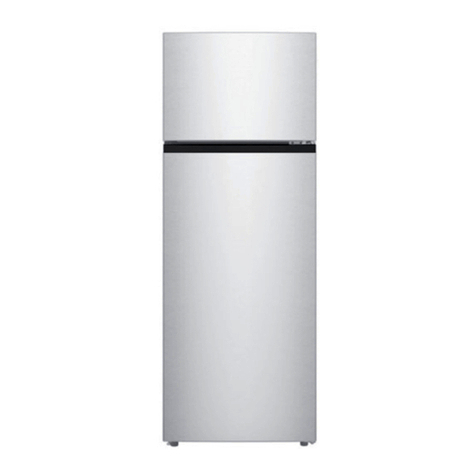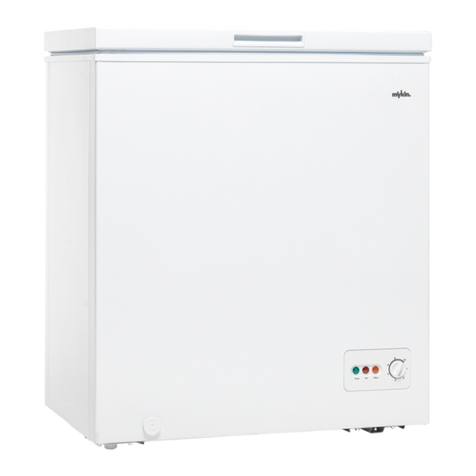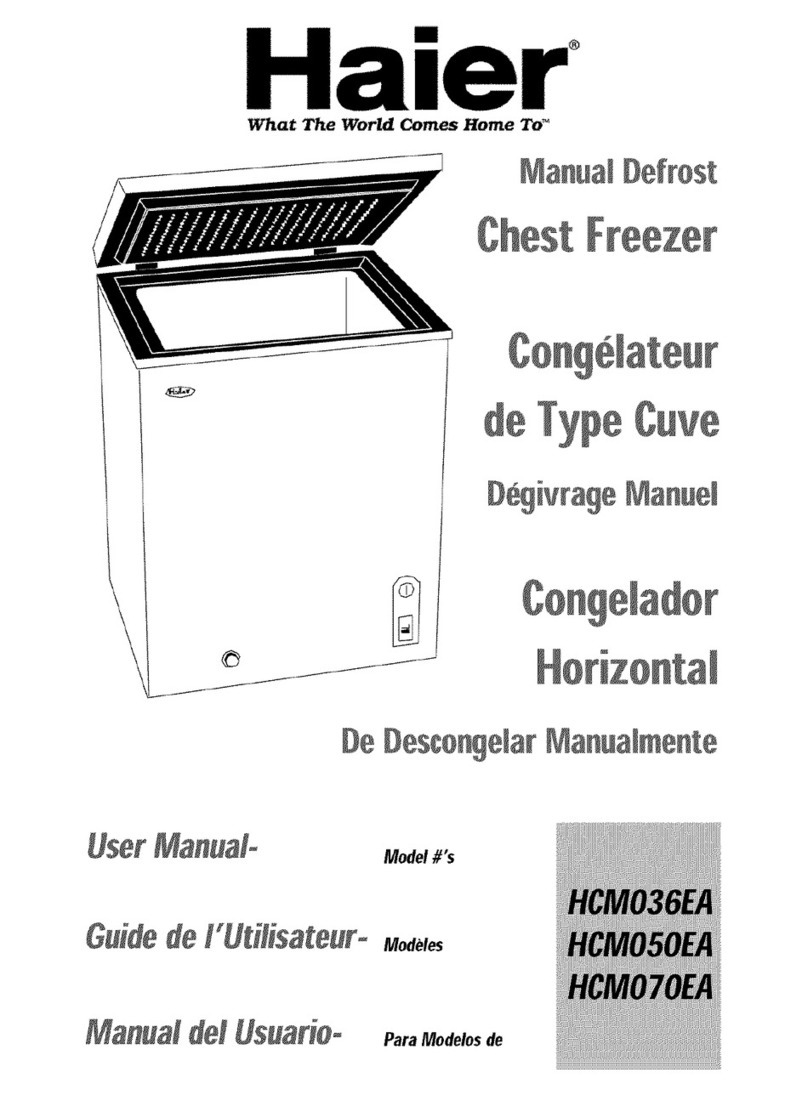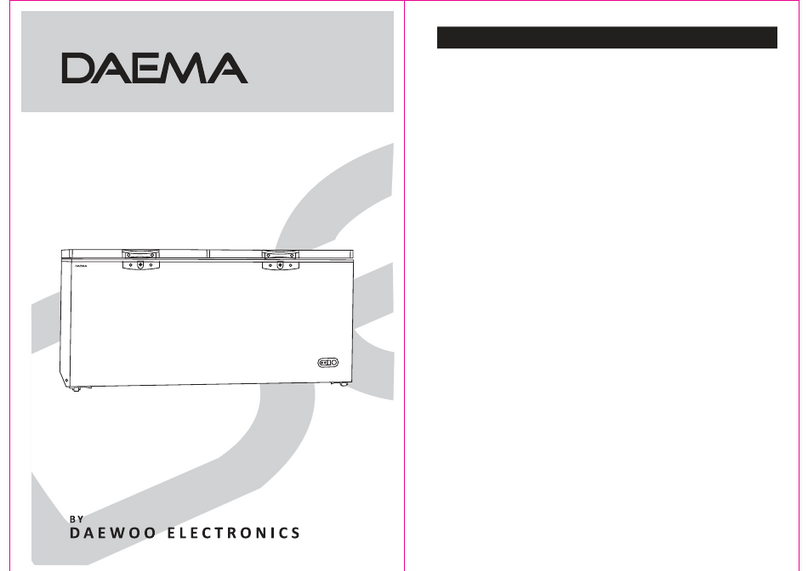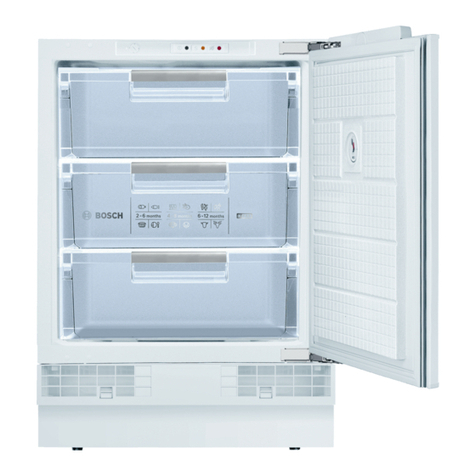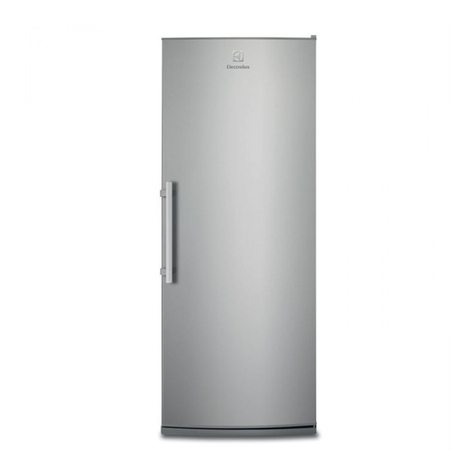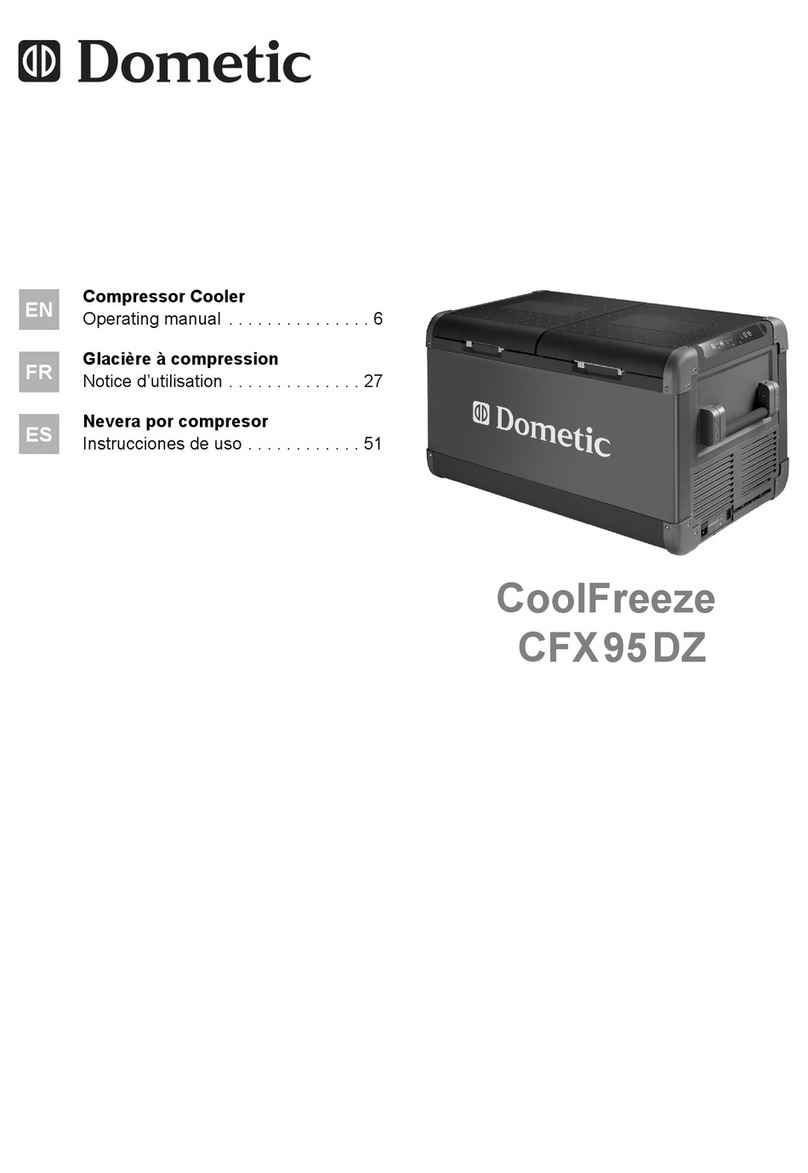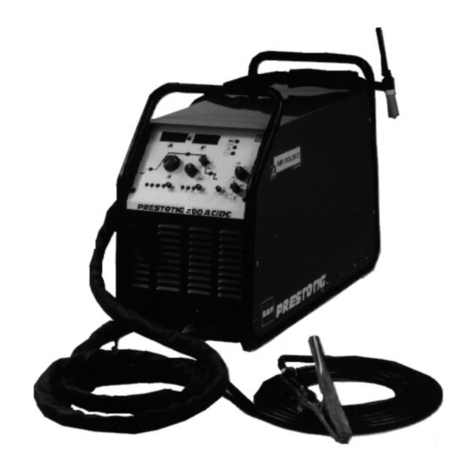Freezing Dairy Products
eutter andMargarine
—Overwrap original carton in moisture/
vapor-proof material or enclose in
moisture/vapor-proof containers.
Cheese
Freeze cheese in %-to l-pound
pieces. Wrap in moisture/vapor-proof
material, Uncreamed cottage and
Camembert cheese may be kept in
the freezer though there maybe some
water separation on thawing. Cream
and processed cheese do not freeze
well as freezing affects their smooth
texture.
Cream
Ordinary household cream for table
use does not freeze well, but will be
suitable for cooking. Pasteurized heavy
cream containing not less than 40 per
cent butterfat may be frozen. Heavy
cream which hasbeen whipped freezes
well, too. Drop mounds of whipped
cream on baking sheets. Freeze.Trans-
fer frozen mounds quickly to arigid
container and seal, separating layers
with paper.
IceCream
Commercial ice creams can be
stored in the freezer in their original
carton, Home-made ice cream should
be packed in moisture/vapor-proof
cartons.
Fine-quality ice cream,with highcream
content, will normally require slightly
lower temperatures than“airy” aiready-
packaged brands with low cream con-
tent. Itwill be necessary to experiment
to determine the iocation inthe freezer
and the temperature controi setting to
keep your favorite ice cream at the
right serving temperature.
FreezingPreparedFoods
readandRolls
Bake, cooi, wrap and freeze. Toserve:
thaw in wrappings at room tempera-
ture. Or, heat or toast frozen. If desired,
wrap in foii and warm for 15minutes in
250° to 300° Foven, Note; most com-
mercially baked products should be
rewrapped in moisture/vapor-proof
materiai before freezing.
Biscuits
May be frozen baked or unbaked. To
serve baked biscuits: defrost in wrap-
pings at room temperature for one
hour. Reheat for 5minutes in 425°F
oven. Or piace frozen biscuits in 375° F
oven for 15 minutes. Unbaked biscuits
shouid be thawed, then baked asusuai.
Cake
Bake and cooi. if frosted, freeze before
wrapping to avoid sticking, To serve:
unwrap frosted cakes; thaw at room
temperature, Thaw unfrosted cakes in
wrappings at room temperature. Ailow
about two hours to thaw aiarge cake.
Icings made with egg white do not
freeze satisfactoriiv. Those made with
powdered sugar, butter, fudge or
hipped cream freeze well.
—Cookies
If baked before freezing, cooi and
package them carefuiiy in moisture/
vapor-proof materiai. They wiii thaw in
about 15minutes at room temperature
in wrappings. Refrigerator cookie
dough may be wrapped and frozen in
bars.Siice as needed, without defrost-
ing, and bake.
Pies
Most pies except cream, custard or
meringue-topped pies freeze weii,
baked or unbaked. Baked pies store
for aionger time. Omit steam vents
from pies to be frozen unbaked.
To serve unbaked pies: Cut steam
vents in top crust and piace frozen pie
in oven at usuai temperature. increase
baking time 10 to 15 minutes. Thaw
frozen baked pies, wrapped, for 1to
1YZhours at room temperature. To
serve warm, unwrap without thawing
and heat in 300*F oven for 30 to 40
minutes.
QuickBr~a~s andMuffins
Bake, cooi and wrap at once, For
serving, thaw, unwrapped, at room
temperature or warm, unwrapped, in
300° Foven.
Main Dishes
Such foods as chili, spaghetti sauce,
casseroles, etc., are prepared in the
same rnannerasfor immediate serving
with the exception of seasoning. During
Use oniy fresh eggs for freezing. Chiii
before freezing. Whole eggs may be
frozen or the whites and yoiks frozen
separately as foiiows:
Whole Eggs- Mix yoiks and whi!es
thoroughly with afork, Do not beat in
air. Add 1teaspoon sait to each 2cups
of eggs,
EggWhites– Separate and freeze in
recipe-sized amounts.
EggYolks–Separate and add 1tea-
spoon of sait or 1tablespoon of corn
syrup or sugar per cupfui of yoiks.
Biend with fork.
Packeggs in freezer carton aiiowing
Yz-inchhead space (l Yz-inchfor giass
containers). Thaw eggs in unopened
container in refrigerator or at room
temperature. -
storage, onion fiavor becomes iess
noticeable and ceiery fiavor more
pronounced. Spices aiso iose their
strength during iong periods of stor-
age. Omit potatoes from stews and
soups as they become mushy.
Cooi main dishes after cooking; pack-
age in moisture/vapor-proof materiai
and freeze. Toserve these foods, thaw
gradualiy over iow heat adding aiittie
iiquid if necessary to prevent foods
from sticking to the pan. Or heat in a
300°F oven for about 1hour or untii
heated thoroughly.
SandwichTips
Aii varieties of breads can be frozen.
Spread softened butter on each slice,
then spread fiiiing. it is not advisable
to use salad dressings for spreading
asthey separate andsoak into the bread.
Meat, fish, some cheeses, poultry and
peanut butter are recommended fiiiings
for freezing. Cooked eggs become
tough when frozen. Other fillings can
be moistened with miik, cream, pickie
reiish, chiii sauce, catsup, fruit juice,
aIittie mayonnaise or saiad dressing.
Lettuce or other salad greens and raw
vegetables do not freeze well and
shouid be added just before serving.
Wrap sandwiches in moisture/vapor-
proof material and freeze.
Part No. 468311P04
